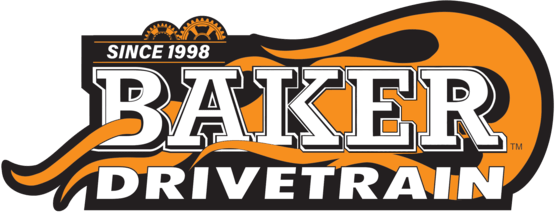Overdrive vs. Direct Drive
We manufacture 2 types of 6-speeds for Big Twins; OD6 (overdrive 6-speed) and DD6 (Direct Drive 6-speed). Both 6-speed configurations achieve a significant RPM reduction on the highway without compromising around town performance. In other words, you get the five gear ratios you currently have with a 5-speed plus that extra gear you’re always looking for on the highway. To determine which 6-speed is right for your application, you must look at your engine output, riding style, bike gearing, GVW, and performance priorities.
What does Overdrive mean?
5th gear in our OD6 has a 1:1 ratio. All ratios greater than 1:1 are underdriven like 4th gear which is 1.23:1. Ratios less than 1:1 are overdriven like 6th gear which is .86:1 and gives the resultant RPM reduction on the highway.
What does direct drive mean?
6th gear in the DD6 has a 1:1 ratio; the same as 5th gear in a 5-speed. The 1:1 gear is THE direct drive gear. With the DD6 the ‘overdrive’ effect on the highway is achieved by ‘overdriving’ the primary with a 28 tooth motor sprocket.
POWER FLOW: HOW EFFICIENT IS YOUR TRANSMISSION IN SIXTH GEAR?
 Conventional Overdrive 92% Efficient
Conventional Overdrive 92% Efficient
Direct Drive 99% Efficient - Waste Less Horsepower!
Generally, the DD6 is designed for touring riders who put on miles, and the OD6 is for the speed freaks and custom bikes. Study the information below and/or consult our tech department to make the decision which 6-speed is right for your application.
The OD6 offers more gear ratio choices than the DD6. These ratio choices are tailored towards the more aggressive rider with more aggressive engines. As engine output increases, the utility of the stock 1st gear ratio diminishes. In other words, a stock 1st gear will only get you partially across the intersection from a dead stop, before you have to shift into 2nd gear. Precisely the reason why we developed R-ratio 1st and 2nd gears for OD6. Also, bigger engines can pull a steeper 6th gear ratio and this is why we developed deep overdrive for OD6. The 6th gear ratio in the DD6 is fixed at 1:1, by design, and can’t be changed.

DD6 4-5 Dog Clutch Shown with Dog Tooth Angle
The undercutting on the side of the dog teeth (highlighted with red line on image below) is an important distinction between DD6 and OD6. OD6 undercut angle is 4° and the DD6 angle is 1°. The function of the undercut is to hold the transmission in gear, along with the shift system detent. 4° undercut angles, as compared to 1° angles, have slightly increased shift effort and slightly compromised shift quality but is necessary with aggressive engine tuning. For reference, some pro-stock V- twin applications run undercut angles as high as 10°. In contrast, Japanese motorcycles usually have undercut angles close to 0° but they can get away with that because their engines lack the violent power pulses of a 45° V-twin.
OD6 Technical Highlights
- 165 ft-lb torque capacity
- Many gear ratio choices for performance applications
- Some light case modification may be required due to casting variation from the factory
DD6 Technical Highlights
- 120 ft-lb torque capacity
- No exhaust clearance issues due to door width and profile
- Minor case modification may be required due to casting variations
- Combination of helical and spur gears yields silent gear operation
- 28 tooth compensator sprocket, supplied with kit or assembly, also gives 14% more starter torque
- Best achievable 6-speed fuel economy, period.
OD6 & DD6 Application Guidelines
- 1990-99 Evo engines producing more than 100ft-lbs of torque• 1999-2006 Twin Cam engines producing more than 120 ft-lbs of torque
- American Ironhorse, Bourget, Titan, Gilroy Indian, and other 45° V-Twin American motorcycles
- Any Harley or 45° V-Twin American motorcycle with an open belt drive
- All 1986-89 Harleys with original tapered mainshaft clutch interface







